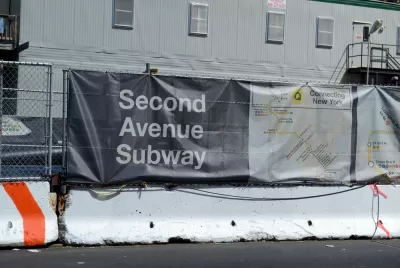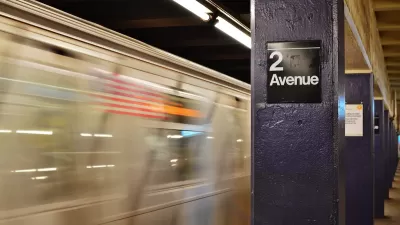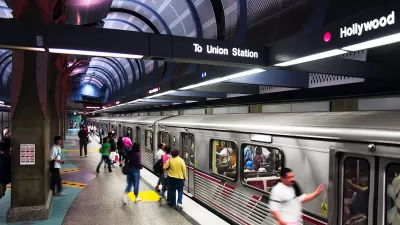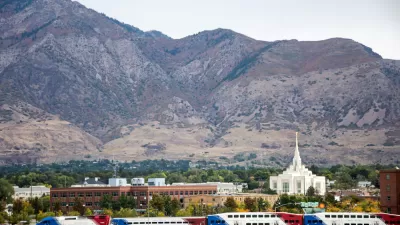The Government Accountability Office was set to investigate why U.S. transit capital investments are so expensive, especially in contrast to comparable European projects, but that study will not leave the station.

The costs of rail projects in Los Angeles have led to a document covering best practices for such public transit projects, "Some people in the United States Senate had the smart idea that the federal government ought to do something similar and included language in their appropriations bill commissioning a Government Accountability Office study of the issue," Mathew Yglesias comments for Vox. However, a federal report on best practices regarding public transit will not be written, because that language didn't make it into the bill that the House of Representatives will see. According to Yglesias, "Nobody seems to want to officially claim credit for killing this."
The problem is real. "The Second Avenue Subway in New York City, for example, is being built at a cost of nearly $1.7 billion per kilometer while new subway lines are being built in Paris, Copenhagen, and Berlin for about $250 million per kilometer," Yglesias reports. And while one study or compendium of best practices won't make the problem go away, studying a problem is better than sweeping it under the rug.
FULL STORY: Someone killed a congressional inquiry into America’s sky-high transit construction costs

Study: Maui’s Plan to Convert Vacation Rentals to Long-Term Housing Could Cause Nearly $1 Billion Economic Loss
The plan would reduce visitor accommodation by 25,% resulting in 1,900 jobs lost.

North Texas Transit Leaders Tout Benefits of TOD for Growing Region
At a summit focused on transit-oriented development, policymakers discussed how North Texas’ expanded light rail system can serve as a tool for economic growth.

Why Should We Subsidize Public Transportation?
Many public transit agencies face financial stress due to rising costs, declining fare revenue, and declining subsidies. Transit advocates must provide a strong business case for increasing public transit funding.

How to Make US Trains Faster
Changes to boarding platforms and a switch to electric trains could improve U.S. passenger rail service without the added cost of high-speed rail.

Columbia’s Revitalized ‘Loop’ Is a Hub for Local Entrepreneurs
A focus on small businesses is helping a commercial corridor in Columbia, Missouri thrive.

Invasive Insect Threatens Minnesota’s Ash Forests
The Emerald Ash Borer is a rapidly spreading invasive pest threatening Minnesota’s ash trees, and homeowners are encouraged to plant diverse replacement species, avoid moving ash firewood, and monitor for signs of infestation.
Urban Design for Planners 1: Software Tools
This six-course series explores essential urban design concepts using open source software and equips planners with the tools they need to participate fully in the urban design process.
Planning for Universal Design
Learn the tools for implementing Universal Design in planning regulations.
Ascent Environmental
Borough of Carlisle
Institute for Housing and Urban Development Studies (IHS)
City of Grandview
Harvard GSD Executive Education
Toledo-Lucas County Plan Commissions
Salt Lake City
NYU Wagner Graduate School of Public Service





























